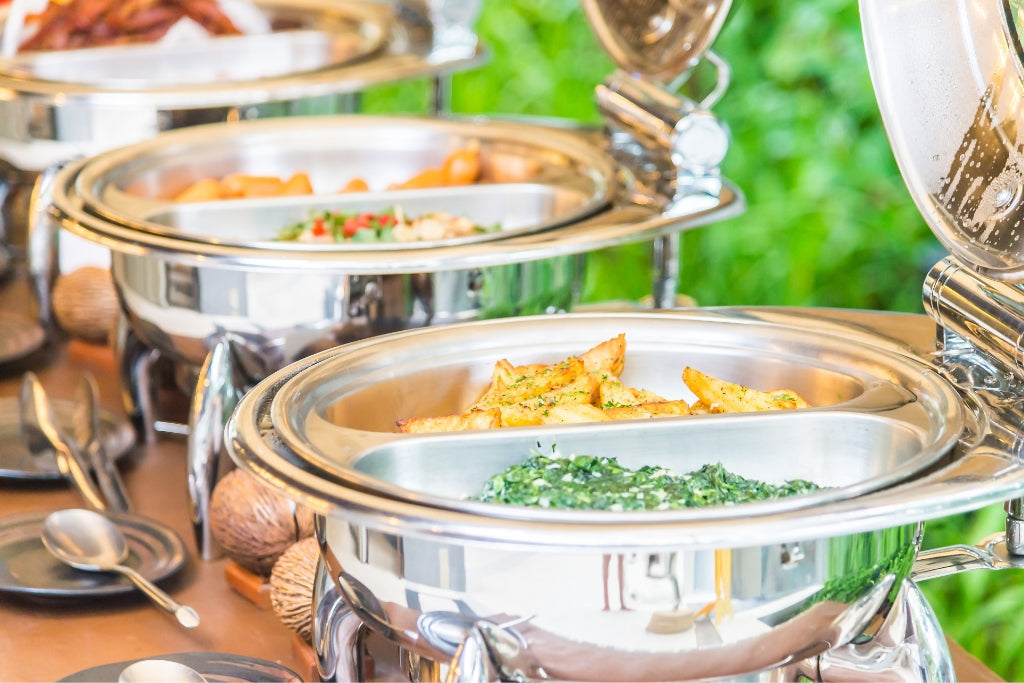Your cart is currently empty.

The Hidden Dangers of Chafing Fuel in Catering – And a Safer Alternative
For decades, caterers have relied on traditional gel alcohol fuel cans to keep food warm at events. These small, seemingly harmless cans power buffet lines, ensuring guests enjoy hot meals. But behind their convenience lies a significant risk. Burn hazards, toxic fumes, and fire dangers have plagued the industry for years, often leading to serious accidents. From caterers suffering severe burns to buffet table fires causing extensive damage, it’s time to rethink the use of these outdated heating methods.
One of the most dangerous aspects of chafing fuel is that its flame is nearly invisible, making it easy for users to accidentally touch, spill, or knock over a burning can. The gel fuel inside can stick to surfaces—and even skin—continuing to burn. In some cases, adding fuel to a partially extinguished can has resulted in flashback explosions, causing severe injuries. The U.S. Consumer Product Safety Commission has recalled millions of units of pourable gel fuels due to accidents, and even traditional gel fuel cans require careful handling to avoid fire hazards.
Beyond fire risks, toxic exposure is another major concern. Many chafing fuel cans contain methanol or diethylene glycol (DEG), both of which are toxic if ingested. While this might seem irrelevant to a catered event, improper storage, spills, or fuel contamination near food can pose health risks. Additionally, burning these fuels in enclosed or poorly ventilated spaces can release formaldehyde and benzene, both known carcinogens. Repeated exposure to these fumes—especially for catering staff who work with these fuels regularly—can have long-term health consequences.
So, what’s the solution? Safer catering technology now exists that eliminates the risks of open flames and toxic chemicals. Flameless food warming options, like heat-retaining pads and catalytic heating systems, offer an effective way to keep food at serving temperatures without the risk of fire or harmful emissions. These alternatives provide consistent heat, are safer to handle, and do not require monitoring like traditional chafing fuels.
By switching to flameless heating solutions, caterers can protect their staff, guests, and business from unnecessary hazards. Events should be about creating memorable experiences—not dealing with preventable accidents. As the catering industry evolves, embracing safer, more sustainable warming solutions isn’t just a smart choice—it’s the responsible one.








